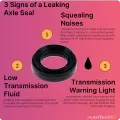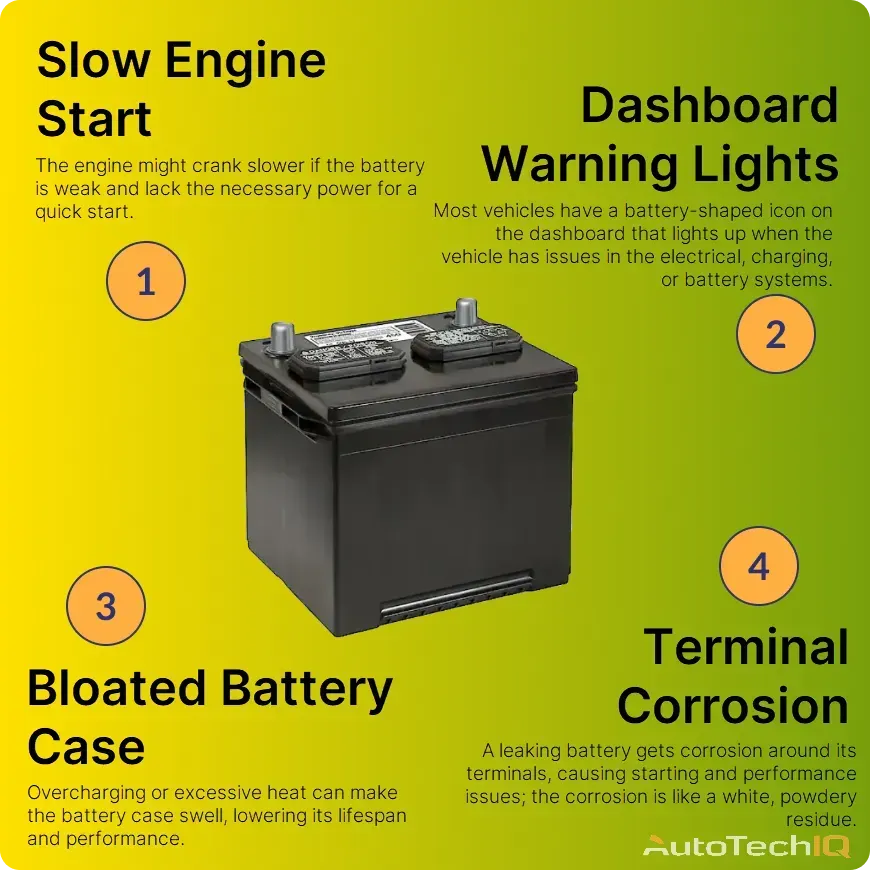
What Are Car Batteries?
Car batteries are the vehicle's main source of electricity. They start the engine and keep electronic devices working when the engine is off. Batteries have a chemical called electrolyte and lead plates in their composition; they store and release energy through chemical reactions. Over time, these batteries can lose their capacity and need replacement.
The most common questions car owners have about car batteries
How much does it cost to replace an alternator?
The cost to replace an alternator can range from $200 to $700. The price depends on vehicle make and model, labor rates, and the part's quality. On average, prices can range from $100 to $500 for the part itself, while labor costs might add $100 to $200. Getting quotes from different reputable service centers can draw an estimate line.
Will adding water to a battery fix it?
Adding filtered water to a battery won't fix it if it's damaged or worn out. Water can only replenish lost electrolyte levels in common lead-acid batteries that are not sealed. However, it won't "fix" a damaged or old battery. If the battery has low fluid levels, filling it with distilled water may only work for a while. Dealing with batteries is dangerous, so do it with caution and avoid overfilling. For sealed batteries in modern vehicles, adding water is not recommended or possible.

Can a car battery be too damaged to jump-start?
Yes, a car battery can be too gone to jump start. If a battery has no charge and has been dead for a while, jump-starting might not be effective. After a long time, the battery's internal plates deteriorate. Additionally, the lead plates can chemically develop a "sulfate buildup," inhibiting electrical flow. Sometimes, even if the jump start works, the battery might not hold it for an entire drive or provide power for future starts.
Do I need to replace the battery after jump-starting it?
Not always. A successful jump-start means your battery started the vehicle and still has some life left. However, consider the following:
-
Age of the Battery: Batteries generally last 3-5 years. If yours is nearing this age, it might be time to replace it.
-
Frequency of Jump Starts: If you regularly need jump starts, the battery is likely failing, or there is an electrical draw on the battery when the key is off.
-
Driving Conditions: Short trips without giving the battery ample time to charge can cause premature discharge.
-
Performance: Slow cranking or dimming lights can indicate a weak battery.
For peace of mind, have the battery tested by a professional. If it's compromised, replacement is advisable.
What are the signs of a bad alternator?
Symptoms of a failing alternator include:
-
Dimming or Flickering Headlights: The alternator provides power to the vehicle's electrical system; lights may become dim or flicker if it's failing.
-
Warning Lights: Most vehicles have a dashboard warning light, typically shaped like a battery or labeled "ALT" or "GEN."
-
Weak or Dead Battery: If the alternator doesn't charge the battery, it may become weak or die.
-
Strange Noises: A worn belt or failing bearings in the alternator can produce whining, grinding, or growling sounds.
-
Electrical Failures: Power windows, radio, AC, and other systems might malfunction.
-
Vehicle Stalling or Difficult to Start: The alternator supplies power to spark plugs, so a failing one might result in stalling or difficulty starting.
-
Burning Smell: Overheating alternator components or belts can produce a burnt rubber or hot wire smell.
If you notice any of these symptoms, it's crucial to have the alternator checked immediately to prevent further complications.
Can a bad alternator kill the battery?
Yes. When the alternator isn't working, the battery compensates by supplying extra power to the vehicle's electrical components. How long a battery will last in this situation depends on:
-
Battery's State of Charge: A fully charged battery might last a few hours, while a half-charged one will deplete faster.
-
Vehicle's Electrical Load: Using headlights, radio, AC, and other electrical components will drain the battery more quickly.
-
Battery Age and Health: A new and healthy battery will last longer than an old or deteriorating one.
-
Driving Conditions: Frequent starts and stops can deplete the battery faster.
Generally, a good battery might last anywhere from 30 minutes to a couple of hours under typical driving conditions with moderate electrical use. However, relying on a battery alone is risky, as it can leave you stranded. If you suspect a bad alternator, seek professional help immediately.
What are the signs of a bad battery?
Indicators of a failing battery include:
-
Slow Engine Crank: When you attempt to start the vehicle, the engine's cranking is sluggish and takes longer than usual.
-
Check Engine or Battery Warning Light: The battery or check engine light might illuminate your dashboard.
-
Bloated Battery Case: If the battery's sides bulge, it has been overcharged or subjected to excessive heat.
-
Battery Leak: Corrosion or residue around the terminals suggests a leak.
-
Age: Batteries typically last 3-5 years. An older battery is more likely to fail.
-
Frequent Jump Starts: The battery is likely on its way out if you constantly require a jump start.
-
Electrical Component Issues: Dimming lights, malfunctioning radio, power windows, or other electronic features can indicate a battery problem.
-
Foul Smell: A rotten egg smell near the battery suggests it's leaking and producing hydrogen gas.
If you experience any of these symptoms, consider having the battery tested by a professional.
Common Signs Indicating The Vehicle Needs a Car Battery Service
Slow Engine Crank: When starting your vehicle, if the engine seems sluggish or takes longer to turn over, it often indicates the battery lacks the necessary power. A weak battery struggles to provide the engine with ample current for a robust start.
Dashboard Warning Lights: Most vehicles have a battery-shaped warning light on the dashboard. If illuminated, it's signaling that the battery isn't charging correctly, which can stem from battery issues or problems in the charging system.

Bloated Battery Case: Overcharging or excessive heat can cause the battery case to swell. A bloated battery case can decrease lifespan and performance, suggesting it's time for a check-up or replacement.
Battery Leak with Terminal Corrosion: A leaky battery often results in corrosive buildup around the terminals. This white, powdery residue can interfere with the battery's connection, leading to starting issues and reduced electrical performance.

Age of the Battery: Most car batteries have a 3-5 year lifespan. If your battery is approaching or exceeding this age range, its performance may decline, indicating the need for a service check or replacement.
Frequent Jump Starts: If you find the need to jump-start your vehicle regularly, this is a clear sign the battery is nearing the end of its lifecycle. Consistent jump starts strain other vehicle components and signals that battery service or replacement is imminent.
Dimming Headlights and Electrical Issues: When the battery power is weak, the headlights may appear dimmer than usual. Additionally, electronic components like the radio, power windows, or air conditioning might malfunction, indicating the battery isn't supplying adequate power.
Distinctive Odor: A damaged or leaky battery might emit a foul, sulfuric odor reminiscent of rotten eggs. This smell is due to the escape of hydrogen gas from the battery acid and signals an immediate need for service.
What a Top-notch Battery Service Looks Like
To illustrate a battery service process, we'll describe a fictional situation. In this situation, a customer seeks help with their car's battery issues. Then, the shop's response to the customer's concern is to provide transparent work focusing on the car owner's comfort and education.
A local auto repair shop, "Rev It Up," prides itself on offering reliable services and ensuring customers understand the importance and process of each service. The management believes that an informed customer will be a responsible car owner. One fine day, Sarah, an unsuspecting car owner, got a firsthand experience of this comprehensive approach towards battery replacement service education.
Inspect: Sarah brought her car into "Rev It Up," puzzled by the warnings flickering across her dashboard. A seasoned technician, Jake welcomed her warmly and assured her they'd get to the bottom of it. Initially, Jake looked at the battery, searching for corrosion, leaks, or swelliness. Using a tablet, he snapped clear photos of the battery, catching the corrosive buildup on the terminals. The corrosion was evident from a fluffy blue-green substance.
Test: Jake presented the images to Sarah on a large, clear display, highlighting the problematic areas. In layman-friendly language, he explained how corrosion can stop the flow of electricity, potentially leading to starting issues or electrical malfunctions.
Evaluate: Next, Jake proceeded with mechanical and electrical testing using a multimeter and a hydrometer. The multimeter would read the battery's voltage, ensuring it didn't over or undercharge. The hydrometer was used to measure the battery's health and charge level.
Jake took more pictures, demonstrating how he performed the tests so that Sarah could understand the mechanical and electrical testing through clear photos. He shared the images on the tablet, comparing them with good battery systems and explaining the discrepancies and risks. Sarah was starting to understand that her battery was in a dire state.
Diagnose: Jake could evaluate and diagnose the issue with the visuals and test readings. He noticed the battery was heavily corroded, and the voltage was also consistently low despite driving. Jake explained to Sarah that batteries typically last 3-5 years, and her 4-year-old battery, combined with the visual and test data, was signaling a replacement.
Customer Education: Before the battery replacement, Jake explained the process to Sarah using diagrams and past case images on his tablet. He showed the steps involved - from removing the old battery, cleaning the terminal clamps, installing the new battery, and ensuring all connections were secure and corrosion-free.
Confirm Repair is Done: Post-installation, Jake performed another series of tests, using his tools and camera to visually and mechanically confirm that the new battery was in good condition and installed correctly. The multimeter displayed a healthy voltage, and there were no warning lights on the dashboard.
He showed the post-service images and test results to Sarah, comparing them with the pre-service state, thus ensuring her peace of mind and validating the necessity and efficacy of the replacement.
Sarah left "Rev It Up" with a new battery and a wealth of knowledge. She appreciated how technology, particularly visual aids via the tablet, provided a transparent and educative approach to understanding what went on under her car's hood. It transformed an otherwise routine service visit into an interactive, informative session, empowering her as a car owner.
Rev It Up's systematic and educational approach towards car service emphasizes the role of technology in not only simplifying diagnostic and repair processes but also enhancing customer service and trust through transparency and education.
5 Top Causes of Battery Failure Symptoms
Slow Engine Crank
The battery doesn't provide enough power to the starter, making the engine turn over sluggishly—a clear sign of a weakened battery.
Dashboard Warning Light
Many vehicles have a battery-shaped warning light that illuminates when the battery isn't charging correctly, indicating potential battery or alternator issues.
Bloated Battery Case
Overcharging or exposure to excessive heat can cause the battery case to swell. This deformation indicates a compromised battery.
Battery Leak and Terminal Corrosion
Acid leaks can lead to corrosive buildup on battery terminals, resulting in poor electrical connections and reduced battery performance.
Frequent Jump Starts
Regular reliance on jump starts indicates the battery can't hold its charge, suggesting it's nearing the end of its lifecycle.
Top 5 Battery Fixes
Battery Replacement
Fix: Change the old, depleted battery for a fresh one to guarantee the best performance and longevity of the vehicle's electrical systems.

Terminal Cleaning
Clean and remove corrosion from battery terminals using a brush and suitable cleaning solution, ensuring optimal electrical connectivity and performance.
Electrolyte Refill
Topping up with distilled water can restore electrolyte balance and improve battery function for batteries with refillable cells.
Trickle Charging
Slowly charge a deeply discharged battery over a longer duration to safely restore its total capacity without causing damage.

Secure Battery Mounting
Ensuring the battery is securely mounted prevents excessive vibrations and potential damage, enhancing battery life and performance.
Summary
Car batteries are essential components in modern vehicles, responsible for storing and supplying electrical energy. They power the starter, ignition system, and various electronic devices. Made of lead plates immersed in an electrolyte solution, batteries operate through chemical reactions to produce voltage. Over time, factors like age, temperature, and usage can affect their performance. Recognizing symptoms of battery failure and implementing timely fixes ensures reliable vehicle operation and reduces the risk of unexpected breakdowns.
There's an auto shop near you delivering fair, transparent service like you've read here.
Feel free to visit our 'Shop Near You' page and search for our certified repair shops in your area. These businesses provide top-notch services and expert inspections using advanced diagnostic tools. You'll witness the same level of care and attention to detail highlighted in this article. These shops share our goal of ensuring your vehicle receives the best possible maintenance. At this goal's core, your knowledge of what's happening to your car and how to maintain it is our #1 priority.
Other news
-
Car is Squealing When Driving
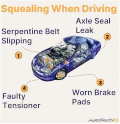
-
What is Preventative Maintenance and What Are The Benefits of it?

-
JobViewIQ - DVI Process Training - Part of the Auto Care Alliance Benefits

-
7 Signs of AC Pulley Issues
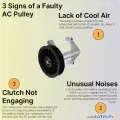
-
7 Signs of Clogged AC Components
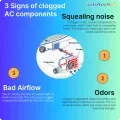
-
How Much Does a Transmission Fluid Change Cost?

-
7 Signs of a Leaking Axle Seal
